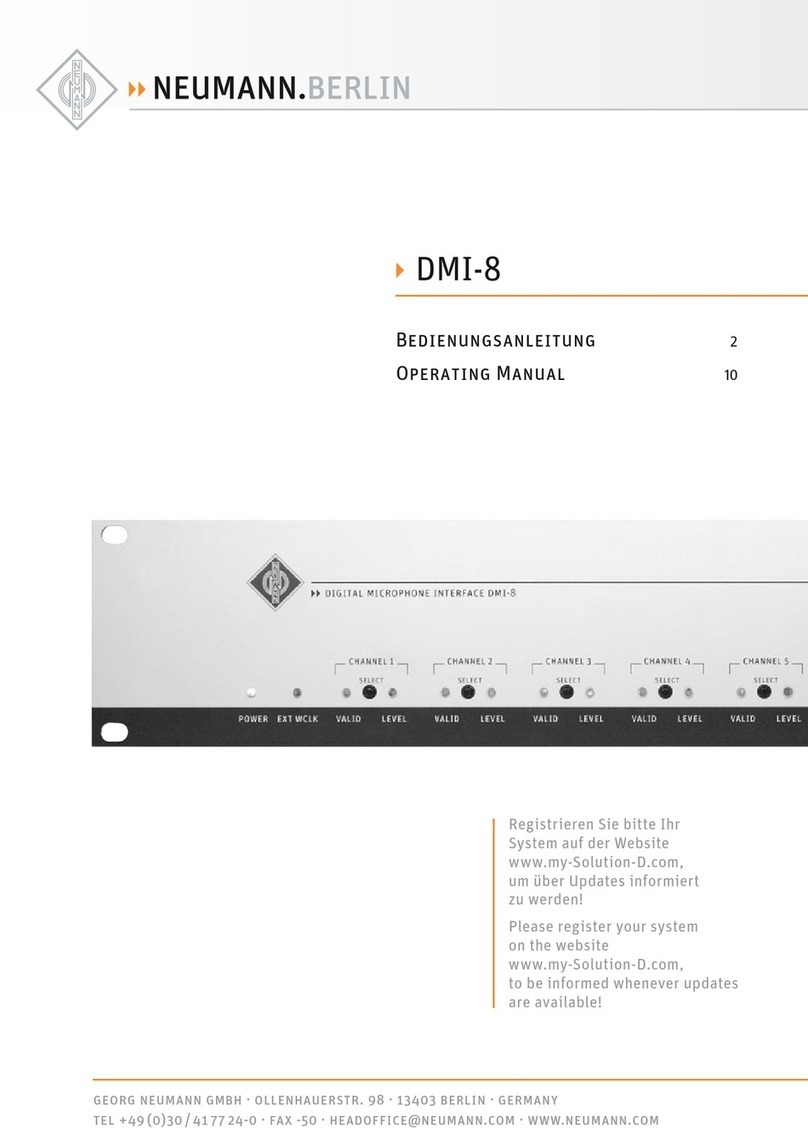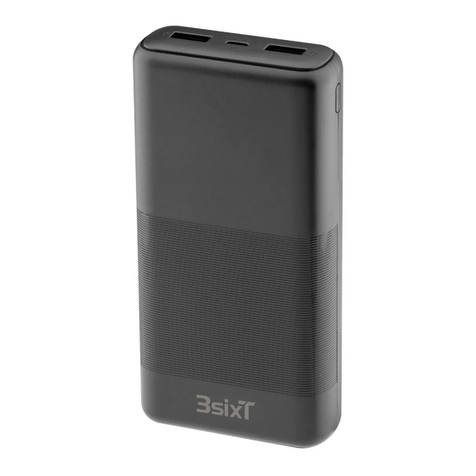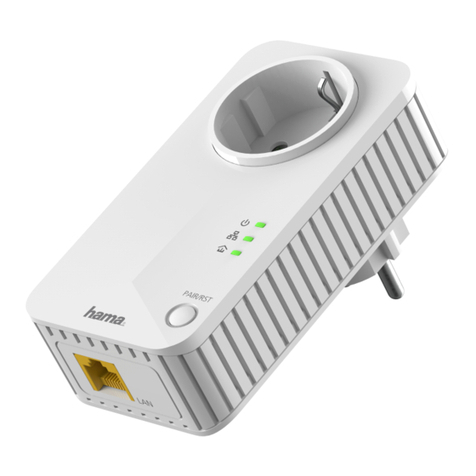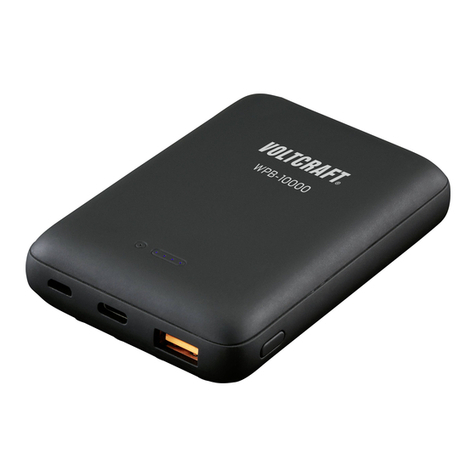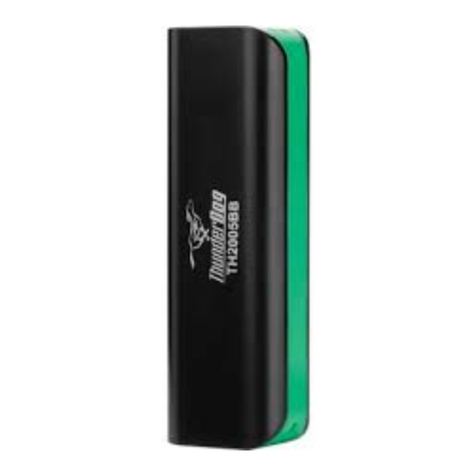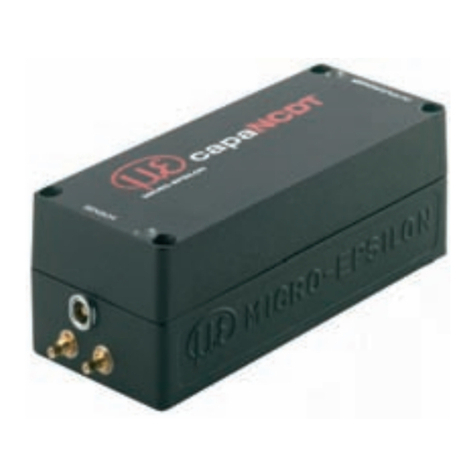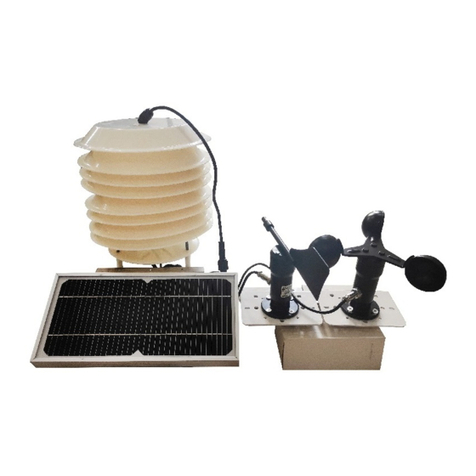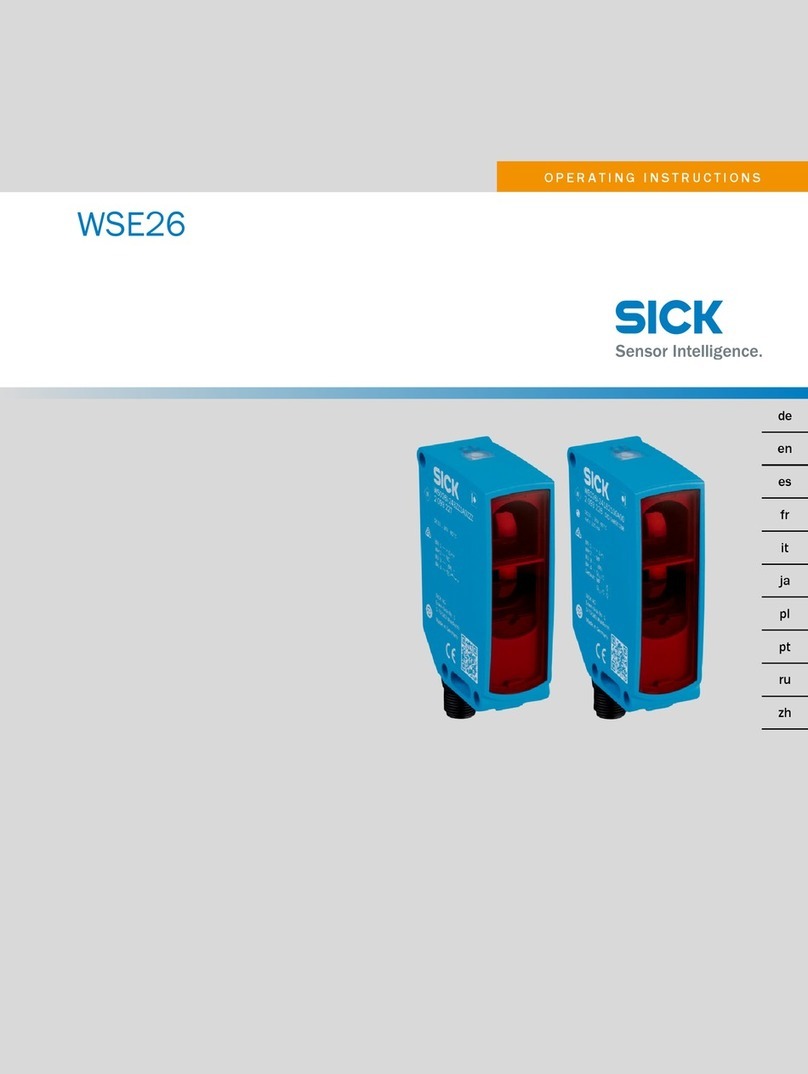Ingenium SRKNX Owner's manual

Motion sensor
SRKNX
V2.1
Parque Tecnológico de
Asturias, Parcela 50, 33428
Llanera – Asturias - Spain
Tel +34) 985 118 859
Fax +34) 984 283 560
ingeniumsl@ingeniumsl.com
www.ingeniumsl.com
TECHNICAL DEPARTMENT
Tel +34) 985 113 339
tecnico@ingeniumsl.com
P
ROGRAMMING MANUAL

P
ROGRAMMING MANUAL
SRKNX
-
V2.1
Motion sensor
1 de 23
Index
1
General description ______________________________________________________________ 2
2
Technical information ____________________________________________________________ 3
3
Programming ___________________________________________________________________ 4
3.1 Communic tion objects ______________________________________________________________ 4
3.2 Objects description _________________________________________________________________ 4
3.3 P r meters ________________________________________________________________________ 6
3.3.1
General parameters _________________________________________________________________________ 6
3.3.2
Channel 1/2 Telegrams ______________________________________________________________________ 8
3.3.3
Channel 1/2 Delays _________________________________________________________________________ 9
4
Recommendations ______________________________________________________________ 11
4.1 Inst ll tion _______________________________________________________________________ 11
4.1.1
Positioning _______________________________________________________________________________ 11
4.1.2
Detection side ____________________________________________________________________________ 14
4.2 Supply ___________________________________________________________________________ 14
4.2.1
Supply using an Auxiliary power supply recommended) __________________________________________ 14
4.2.2
Supply through BUS KNX ____________________________________________________________________ 14
4.3 Adv nced configur tion _____________________________________________________________ 15
4.3.1
Sensitivity ________________________________________________________________________________ 15
4.3.2
Smoothing and sampling time _______________________________________________________________ 16
4.3.3
Saturation _______________________________________________________________________________ 16
5
Application examples ___________________________________________________________ 17
5.1 Motion switching with double ch nnel ________________________________________________ 17
5.1.1
Devices __________________________________________________________________________________ 17
5.1.2
Description _______________________________________________________________________________ 17
5.1.3
Objects links ______________________________________________________________________________ 17
5.1.4
Parameter settings ________________________________________________________________________ 18
5.2 M ster / Sl ve mode: 1 light nd 3 sensors _____________________________________________ 19
5.2.1
Devices __________________________________________________________________________________ 19
5.2.2
Description _______________________________________________________________________________ 19
5.2.3
Objects links ______________________________________________________________________________ 19
5.2.4
Parameter settings ________________________________________________________________________ 20
5.3 M nu l on nd utom tic off ________________________________________________________ 21
5.3.1
Devices __________________________________________________________________________________ 21
5.3.2
Description _______________________________________________________________________________ 21
5.3.3
Objects links ______________________________________________________________________________ 21
5.3.4
Parameter settings ________________________________________________________________________ 22

P
ROGRAMMING MANUAL
SRKNX
-
V2.1
Motion sensor
2 de 23
1G
ENERAL DESCRIPTION
The SRKNX is a hidden 360º radiofrequency movement detector for installation above false or technical ceilings.
It is also possible to install it in brick walls or plasterboards. This device is oriented to substitute the ceiling 360º
passive detectors, clearly overcoming their performances.
It is based on radio frequency technology, that allows it to pass through any kind of surface, except the metallic
ones. Its hidden installation guarantees safety against non desired intrusions or vandalism. Moreover, it
combines esthetics and automation in a single installation. It allows a wide and easy parameterization, being
suitable for lighting functions, as well as people detection and intruder control.
•Detects movement through solid, non-metallic objects brick, wood, etc).
•Detects minimum movements.
•Hidden installation in false ceilings or walls.
•Easy to install, adds elegance to the lighting design
•It is immune to vandalism.
•Automatic reset after detection.
•Adjustable timer from pulse to 17min.
•Adjustable sensitivity up to 12m.

P
ROGRAMMING MANUAL
SRKNX
-
V2.1
Motion sensor
3 de 23
2T
ECHNICAL INFORMATION
•Supply - 29 Vdc from auxiliary power supply or from KNX BUS.
•Consumption - depends on source):
oAuxiliary Power Supply 12-30Vdc Recommended)
35 mA from auxiliary power supply.
1mA from KNX BUS
oKNX BUS Optional)
35mA from KNX BUS
•Connections - Screw terminal four poles terminal block).
•Type of protection - IP20. Extra low security voltage SELV, 24V direct current.
•Temperature range - Running: -10ºC a 55ºC / Storage: -30ºC a 60ºC / Transport: -30ºC a 60ºC.
•Size / weight - 25x45x65mm. / 115g.
•Mount - over false ceilings or hidden in walls or bricks.
•Standardization - for KNX.
•Detection range: 12 x 6 m at 2.5 height).

P
ROGRAMMING MANUAL
SRKNX
-
V2.1
Motion sensor
4 de 23
3P
ROGRAMMING
3.1 C
OMMUNICATION OBJECTS
Number of communication objects: 11.
Number of assignments: 33.
Object N me / Function Length DPT
Fl gs
C
R
W
T
U
0 Channel 1 - Detection event: Bit 1 bit 1.001 ● ● ●
1 Channel 1 - Detection event: Byte 1 byte 5.010 ● ● ●
2 Channel 1 - Detection event: Temperature 2 byte 9.001 ● ● ●
3 Channel 1 - Enable / disable channel 1 bit 1.001 ● ●
4 Channel 1 - Force remote detection 1 bit 1.001 ● ●
5 Channel 1 - Remaining time seconds) 2 byte 7.005 ● ● ●
6 Channel 2 - Detection event: Bit 1 bit 1.001 ● ● ●
7 Channel 2 - Detection event: Byte 1 byte 5.010 ● ● ●
8 Channel 2 - Detection event: Temperature 2 byte 9.001 ● ● ●
9 Channel 2 - Enable / disable channel 1 bit 1.001 ● ●
10 Channel 2 - Force remote detection 1 bit 1.001 ● ●
11 Channel 2 - Remaining time seconds) 2 byte raw ● ● ●
3.2 O
BJECTS DESCRIPTION
Object 0: Ch nnel 1 - Detection event: Bit
Channel 1 detection communication object in 1 bit format. When a motion is detected and the sensor is
triggered, it sends the correspondent parameter On. When the countdown finishes switch-off delay) it sends
the correspondent parameter Off.
Object 1: Ch nnel 1 - Detection event: Byte
Channel 1 detection communication object in 1 byte format. When a motion is detected and the sensor is
triggered, it sends the correspondent parameter On. When the countdown finishes switch-off delay) it sends
the correspondent parameter Off.

P
ROGRAMMING MANUAL
SRKNX
-
V2.1
Motion sensor
5 de 23
Object 2: Ch nnel 1 - Detection event: 2 Bytes
Channel 1 detection communication object in 2 bytes format. When a motion is detected and the sensor is
triggered, it sends the correspondent parameter On. When the countdown finishes switch-off delay) it sends
the correspondent parameter Off.
Object 3: Ch nnel 1 - En ble / dis ble ch nnel
1 = Motion detection enabled.
0 = Motion detection disabled stand-by mode).
Object 4: Ch nnel 1 - Force remote detection
1 = Forces a remote detection.
0 = Forces a remote end of detection.
Used for Master-Slave mode. It allows to emulate a detection without any motion. By sending 1, the detector is
activated remotely performing the start detection event. Slave sensors emulate Master detections: link bit
detection event of the slave with
Object 5: Ch nnel 1 - Rem ining time (seconds)
0 – 65535 = Remaining time in seconds for end of detection event.
The remaining time of the countdown after motion detection can be read by this communication object.
Object 6: Ch nnel 2 - Detection event: Bit
Channel 2 detection communication object in 1 bit format. When a motion is detected and the sensor is
triggered, it sends the correspondent parameter On. When the countdown finishes switch-off delay) it sends
the correspondent parameter Off.
Object 7: Ch nnel 2 - Detection event: Byte
Channel 2 detection communication object in 1 byte format. When a motion is detected and the sensor is
triggered, it sends the correspondent parameter On. When the countdown finishes switch-off delay) it sends
the correspondent parameter Off.
Object 8: Ch nnel 2 - Detection event: 2 Bytes
Channel 2 detection communication object in 2 bytes format. When a motion is detected and the sensor is
triggered, it sends the correspondent parameter On. When the countdown finishes switch-off delay) it sends
the correspondent parameter Off.
Object 9: Ch nnel 2 - En ble / dis ble ch nnel
1 = Motion detection enabled.
0 = Motion detection disabled stand-by mode).

P
ROGRAMMING MANUAL
SRKNX
-
V2.1
Motion sensor
6 de 23
Object 10: Ch nnel 2 - Force remote detection
1 = Forces a remote detection.
0 = Forces a remote end of detection.
Used for Master-Slave mode. It allows to emulate a detection without any motion. By sending 1, the detector is
activated remotely performing the start detection event. Slave sensors emulate Master detections: link bit
detection event of the slave with
Object 11: Ch nnel 2 - Rem ining time (seconds)
0 – 65535 = Remaining time in seconds for end of detection event. The remaining time of the countdown after
motion detection can be read by this communication object.
3.3 P
ARAMETERS
3.3.1 G
ENERAL PARAMETERS
General parameters allow to set the detection characteristics of the sensor and are described as follows:
BUSing Address
Values From 0 to 255
Description
Not used

P
ROGRAMMING MANUAL
SRKNX
-
V2.1
Motion sensor
7 de 23
Adv nced: smoothing
Values From 0 to 10
Description
Is the value that represents the persistence of the detected movement. This value can range
between 0 and 10. The greater value, the more continuous the movement must be for activation
to occur. This value must be lesser than or equal to half the Sampling time parameter.
Recommended values depending on usage:
−Movement detection example: activate lighting): 2.
−Intrusion detection: 8.
Sensitivity
Values From 0 to 100
Description
This is the sensitivity percentage value with which the SRBUS detects movements, i.e., it increases
or decreases the detection area. This value can range between 0 and 100%, where 100% is the
maximum sensitivity.
It is not recommended to enter values over 80%, which could make the SRBUS extremely sensitive
to vibrations in the zone installed) whatever their origin may be.
Recommended values depending on usage:
−Movement detection example: activate lighting): 40-60% lower value for smaller rooms).
−Intruder: 20%.
Adv nced: s mpling time
Values From 0 to 255
Description
This value ranges between 0 and 255, but it is not recommended to be over 64. It represents the
number of samplings taken to evaluate a detection. The greater the value, the slower the device
response it is measured in microcontroller cycles, not seconds).
Recommended values depending on usage:
−Movement detection example: activate lighting): 16.
−Intrusion detection: 64
Adv nced: s tur tion
Values From 0 to 100
Description
Is the value that represents the level of movement with which the device is activated,
independently of the Sampling time and Smoothing. If it is not used, it must be set to 100%.

P
ROGRAMMING MANUAL
SRKNX
-
V2.1
Motion sensor
de 23
3.3.2 C
HANNEL
1/2
T
ELEGRAMS
The configuration of the sensor behavior when there is a motion detection and when it finishes is done here.
The working mode and parameterization of both channels is done in the same way and they have similar
parameters that are explained next:
Ch nnel 1 / 2 - Motion bit telegr m
Values From 0 to 1
Description
Value sent in object 0/6 DPT1.00X) when a motion is detected.
Ch nnel 1 / 2 - No motion bit telegr m
Values From 0 to 1
Description
Value sent in object 0/6 DPT1.00X) after switch-off delay.
Ch nnel 1 / 2 - Motion temper ture telegr m
Values From -1000 to 1000 ºC
Description
Value sent in object 2/8 DPT9.002) when a motion is detected.
Ch nnel 1 / 2 - No motion temper ture telegr m
Values From -1000 to 1000 ºC
Description
Value sent in object 2/8 DPT9.002) after switch-off delay.

P
ROGRAMMING MANUAL
SRKNX
-
V2.1
Motion sensor
9 de 23
Ch nnel 1 / 2 - Motion byte telegr m
Values From 0 to 255
Description
Value sent in object 1/7 Byte) when a motion is detected.
Ch nnel 1 / 2 - No motion byte telegr m
Values From 0 to 255
Description
Value sent in object 1/7 Byte) after switch-off delay.
Ch nnel 1 / 2 - Telegr ms when motion detection
Values Yes / No
Description
If this parameter is enabled, after a motion detection, the sensor sends ON telegrams in objects
0,1,2 for channel 1 and objects 6,7,8 for channel 2.
Ch nnel 1 / 2 - Telegr ms fter motion detection
Values Yes / No
Description
If this parameter is enabled, if there is no motion within the switch-off delay, the sensor sends OFF
telegrams in objects 0,1,2 for channel 1 and objects 6,7,8 for channel 2.
Ch nnel 1 / 2 - Off telegr ms when ch nnel dis ble
Values Yes / No
Description
If this parameter is enabled, after a channel is switched off with objects 3 or 9, the OFF events are
sent by objects 0,1,2 for channel 1 and objects 6,7,8 for channel 2.
3.3.3 C
HANNEL
1/2
D
ELAYS

P
ROGRAMMING MANUAL
SRKNX
-
V2.1
Motion sensor
10 de 23
These parameters allow to configure time delays when enabling or disabling the sensor and the time that the
light is on when the sensor is programmed for lightning control.
Ch nnel dis ble del y
Values From 0 to 65535
Description
The channel keeps detecting motion until the disable delay time set has elapsed.
Ch nnel en ble del y
Values From 0 to 65535
Description
The channel does not respond until the enable delay time set has elapsed.
Ch nnel switch-off del y
Values From 0 to 65535
Description
This parameter is the time between the last motion detection and the sending of switch-off
events. In lightning control, the switch-off delay determines how long after a motion is detected
the light is to be switched off again. With every motion, the sensor is retriggered and the
countdown is re-started, so the light is not switched off until there is no motion within the delay
time

P
ROGRAMMING MANUAL
SRKNX
-
V2.1
Motion sensor
11 de 23
4R
ECOMMENDATIONS
4.1 I
NSTALLATION
4.1.1 P
OSITIONING
The SRKNX could be installed in a false ceiling or behind walls of any non-metalic material. Its hidden installation
ensure safety unwanted intrusions or vandalism to not be accessible.
For longitudinal places like corridors, it is important to place the SRKNX in the correct position. The correct
solution is to place it lengthwise, with the length of the device parallel to the length of the room. Next image
shows the detection directions and the area detection on each one, estimated for place the SRKNX at 2.5m from
the floor.
The detection area placing the SRKNX at 2.5m from the floor) is:
•Guaranteed: 6x3 m.
•Maximum: 12x6m.
These values could change if the SRKNX positioning height changes. The beam detection angle is 140º in
longitudinal direction and 70º in transversal direction.

P
ROGRAMMING MANUAL
SRKNX
-
V2.1
Motion sensor
12 de 23
The best position of the sensor depends on the shape of the room where it is installed, for example a meeting
room with long shape:
The first positioning may cause problems with false detections outside the meeting room or non-detections in
some areas of the room.
The second positioning is the best because the detection area of the sensors fits better with the shape of the
room.

P
ROGRAMMING MANUAL
SRKNX
-
V2.1
Motion sensor
13 de 23
The SRKNX can be partially blinded with metal tape to cancel detection in a zone/direction. For example, when it
has to be installed in one side of the room, it is recommended to reduce the detection area with metal tape in
order to avoid false detections by movements behind the wall.
In addition, the SRKNX must be firm fixed to the surface it will be installed on to avoid false detections and also it
is very important no to install the device in locations susceptible to vibrations or over fluorescents lights for
example.

P
ROGRAMMING MANUAL
SRKNX
-
V2.1
Motion sensor
14 de 23
4.1.2 D
ETECTION SIDE
The SRKNX detects by the silk screened side, so it should be placed with this side faced to the movement.
For example, when using the sensor in ceilings, if it is installed with the wrong side faced to the room area it
won’t detect anything or it can detect movements in the upper floor.
4.2 S
UPPLY
It is possible to choose between two different options to supply the SRKNX: using an auxiliary power supply
recommended) or through BUS KNX.
4.2.1 S
UPPLY USING AN
A
UXILIARY POWER SUPPLY
RECOMMENDED
)
The consumption for this option is 30 mA from the auxiliary power supply 12-30Vdc) and 1 mA from the BUS
KNX.
To supply the SRKNX device using an auxiliary power supply, instead of the KNX BUS, the wiring connection
should be:
4.2.2 S
UPPLY THROUGH
BUS
KNX
The consumption for this option is 30 mA from the BUS KNX.
To supply the SRKNX device through BUS KNX, the wiring connection should be:

P
ROGRAMMING MANUAL
SRKNX
-
V2.1
Motion sensor
15 de 23
4.3 A
DVANCED CONFIGURATION
4.3.1 S
ENSITIVITY
The SRKNX emits a detection beam of high intensity, being of greater or lesser scope depending on the
sensitivity for which it has been programmed from ETS parameters. When the sensitivity is 100%, the detection
range of the sensor covers an area of 12 x 6 m approximately at 2.5 height. If we reduce the sensitivity we will
reduce the detection range proportionally so this parameter must be configured accorded to the size of the
room or area that should be covered.
In the next figure is shown what is the SRKNX behavior depending on the advanced parameters configured:

P
ROGRAMMING MANUAL
SRKNX
-
V2.1
Motion sensor
16 de 23
4.3.2 S
MOOTHING AND SAMPLING TIME
The SRKNX is constantly emitting radio frequency signals. The movement detection is based on the change that
any body, material or thing makes in the radio signals reflected. These signals are filtered, processed and
considered as a “motion detection” depending on parameters.
Any movement that generates a number of pulses higher than the smoothing, within a given sampling time, is
considered a “motion detection” by the sensor. For the same sampling time, increasing the smoothing means
that the movement should be faster and higher to generate a “motion detection” because more pulses are
necessary.
The telegrams executed by the sensor when there is a motion detection are sent after every s mpling time, so
increasing the sampling time makes the sensor response slower. If the smoothing does not change, the
movement needed to generate a “motion detection” can be the same, but the sensor does not switch on the
light after the sampling time.
4.3.3 S
ATURATION
The s tur tion is the level of reflected signal with which the device considers a “motion detection”,
independently of the sampling time and smoothing. This means that, for a given sampling time and smoothing, if
the signal level received by the sensor is higher than the saturation, it generates a “motion detection” even if
there was not any movement.

P
ROGRAMMING MANUAL
SRKNX
-
V2.1
Motion sensor
17 de 23
5A
PPLICATION EXAMPLES
5.1 M
OTION SWITCHING WITH DOUBLE CHANNEL
5.1.1 D
EVICES
SRKNX: Motion double channel sensor.
6E4S-KNX: On/Off actuator with 6 digital inputs and 4 digital outputs.
5.1.2 D
ESCRIPTION
Light number 1 and number 2 are connected to outputs 1 and 2 Z1 and Z2) of the 6E4S-KNX actuator.
The SRKNX controls the lights by motion detection. Light number 1 will be controlled by the firs channel of the
sensor and will be switched on for 15 seconds and the Light number 2 will be controlled by the second channel
and will be switched on for 20 seconds.
5.1.3 O
BJECTS LINKS
SRKNX – Object 0 -> Object 4 – 6E4S-KNX
SRKNX – Object 6 -> Object 6 – 6E4S-KNX
Object 0
Object 4
Object 6
Object 6

P
ROGRAMMING MANUAL
SRKNX
-
V2.1
Motion sensor
1 de 23
5.1.4 P
ARAMETER SETTINGS
The following parameter setting is generally recommended for this example. The ideal parameters may change
depending on the application or installation.
P r meter n me Recommended setting
General parameters Smoothing 2
Sensitivity 30
Sampling time 16
Saturation 100
Ch1 Event values Bit event on 1
Bit event off 0
Detection event notification yes
End of detection event notification yes
Ch1 Delays Channel enable delay 0
Channel disable delay 0
Switch-off delay 15
Ch2 Event values Bit event on 1
Bit event off 0
Detection event notification yes
End of detection event notification yes
Ch2 Delays Channel enable delay 0
Channel disable delay 0
Switch-off delay 20
A Smoothing = 2 and Sampling time = 16 are generally recommended for normal lightning control by motion
detection. The sensitivity depends on the detection area desired so it must be configured according to the area
that should be covered. About the Saturation function, if it is not used it should have a value of 100. See 4.3
Advanced configuration for further information.

P
ROGRAMMING MANUAL
SRKNX
-
V2.1
Motion sensor
19 de 23
5.2 M
ASTER
/
S
LAVE MODE
:
1
LIGHT AND
3
SENSORS
5.2.1 D
EVICES
3 x SRKNX: Motion double channel sensor.
6E4S-KNX: On/Off actuator with 6 digital inputs and 4 digital outputs.
5.2.2 D
ESCRIPTION
A circuit is connected to output 1 Z1) of the 6E6S-KNX actuator and lights are placed along a corridor. Three
SRKNX sensors, one in the middle and another two placed on each side of the corridor will control the lights by
motion detection. The lights will be switched on for 15 seconds.
5.2.3 O
BJECTS LINKS
Slave 1 SRKNX – Object 0 -> Object 4 – Master SRKNX
Slave 2 SRKNX – Object 0 -> Object 4 – Master SRKNX
Master SRKNX – Object 0 -> Object 4 – 6E4S-KNX
Slave 1
Slave 2
Object 0
Object 0
Object 4
Object 4
Object 0
Master
Table of contents
Popular Accessories manuals by other brands
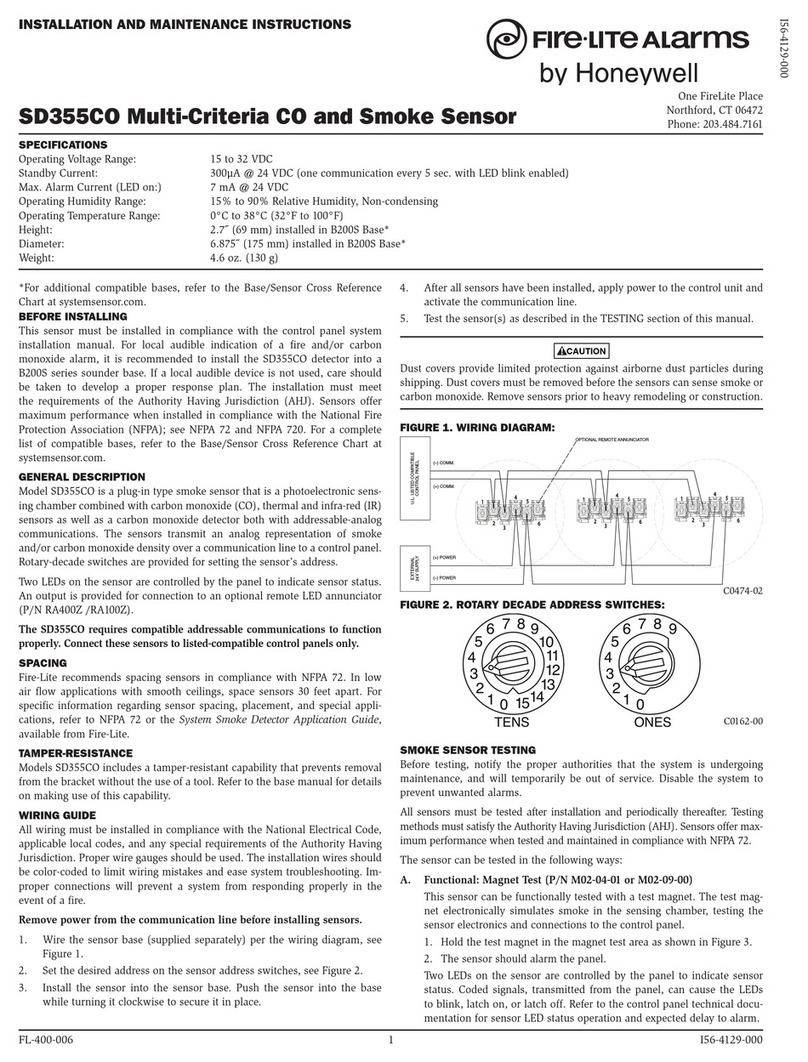
Fire-Lite Alarms
Fire-Lite Alarms SD355CO Installation and maintenance instructions
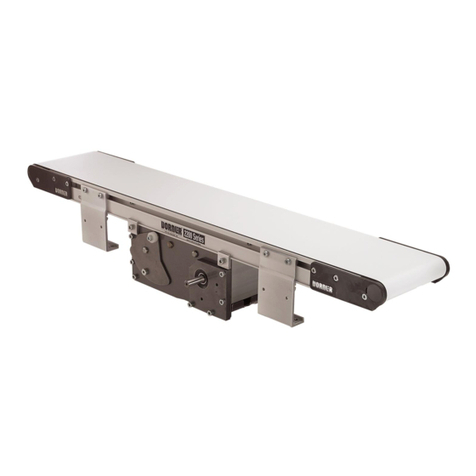
Dorner
Dorner 2200 series Installation & parts manual
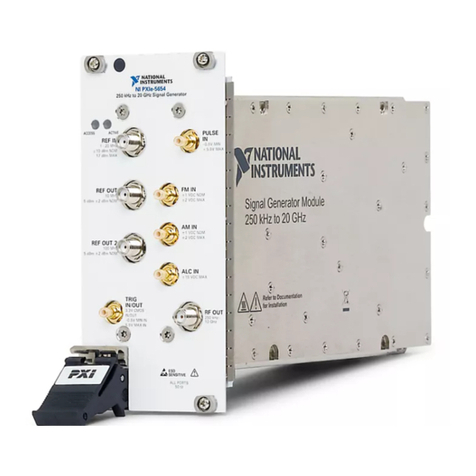
National Instruments
National Instruments PXIe-5654 Getting started guide
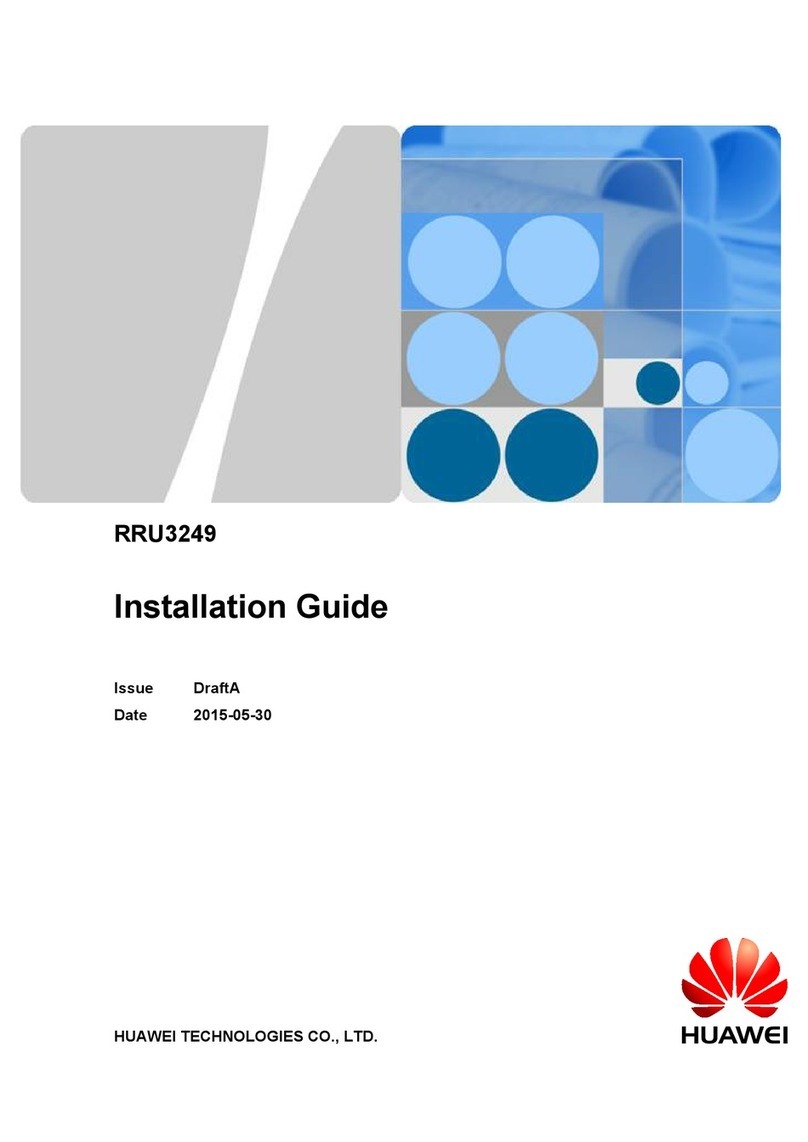
Huawei
Huawei Airbridge DBS3900 installation guide
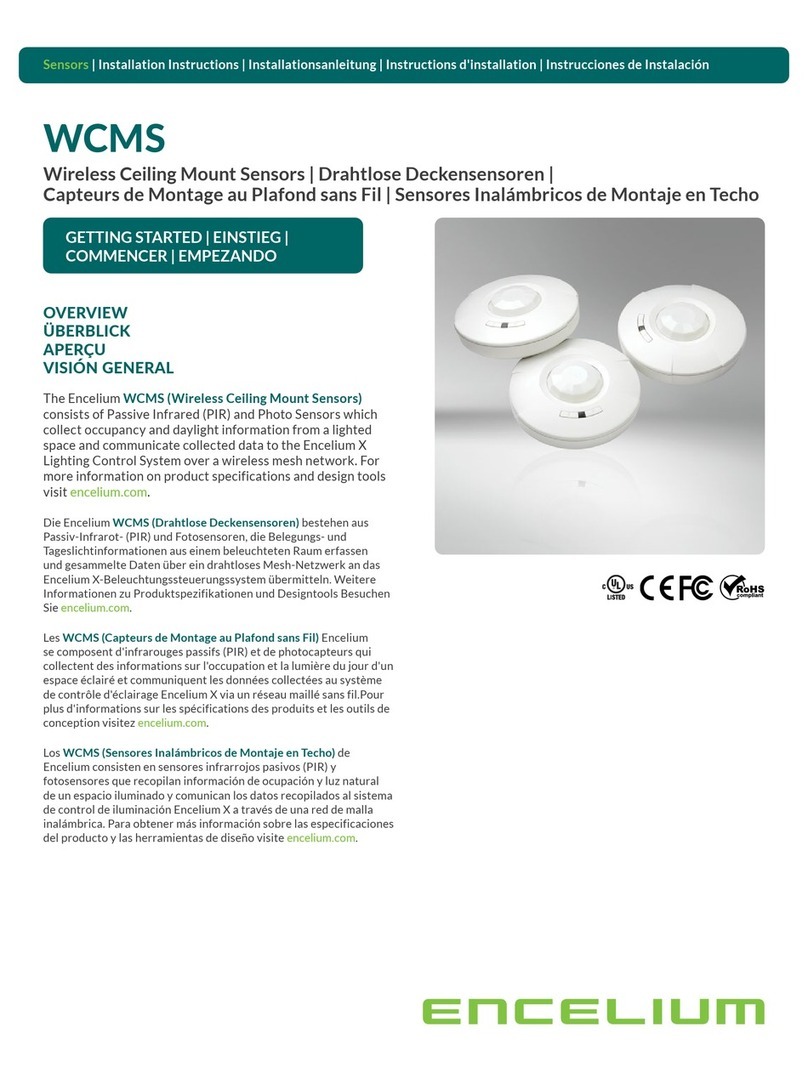
Encelium
Encelium WCMS installation instructions
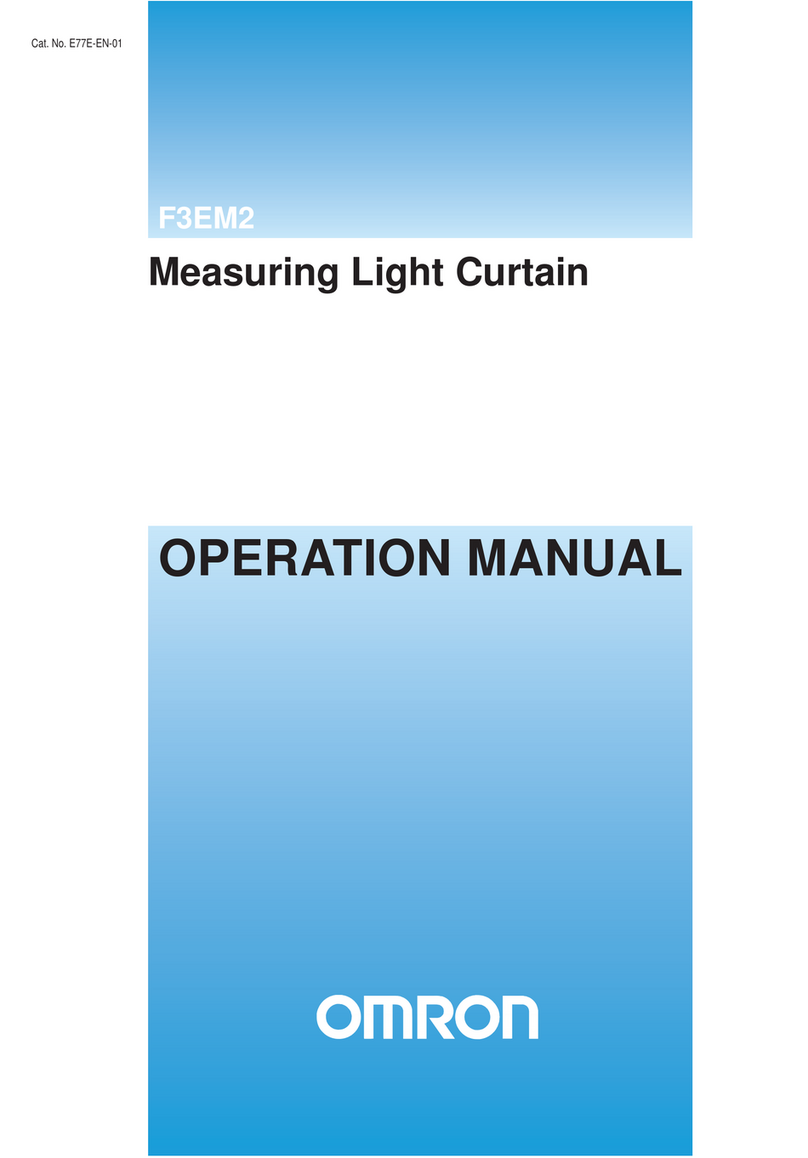
Omron
Omron F3EM2-005 Series Operation manual


